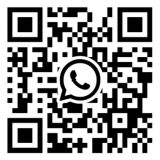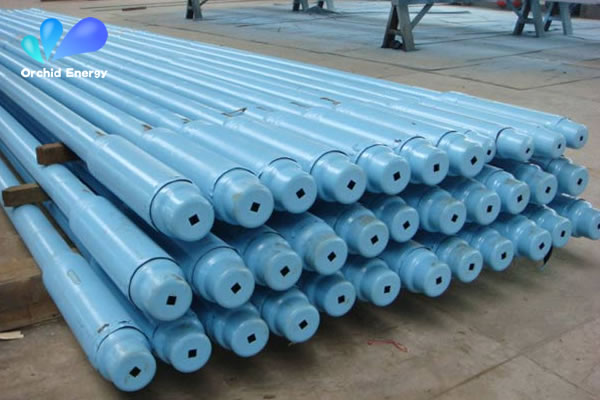-
ꁸ Top
-
ꂅ +86 159 1059 4147
-
ꀥ WhatsApp



-
HOME
-
ABOUT
-
PRODUCTS
- DRILLING TOOLS
- DRILLING MOTORS
- STABILIZERS
- DRILL COLLARS
- DRILLING JARS
- HYDRAULIC AGITATOR
- ANTI STICK-SLIP TOOL
- MULTIPLE ACTIVATION BYPASS VALVE
- DRILL PIPES
- NON-ROTATING PROTECTOR
- X-OVER & SUBS
- DRILL BITS
- MICRO REAMER
- FISHING TOOLS
- RELEASING SPEAR
- RELEASING AND CIRCULATING OVERSHOT
- REVERSE CIRCULATION JUNK BASKET
- JUNK SUB
- FISHING MAGNET
- SAFETY JOINT
- TAPER TAP
- DIE COLLAR
- IMPRESSION BLOCK
- DITCH MAGNET
- MILLING SHOES
- WASHOVER PIPE
- IBOPs
- KELLY VALVE
- FLOAT VALVE
- FULL OPENING SAFETY VALVE
- TOP DRIVE IBOP
- INSIDE BOP
- DROP-IN CHECK VALVE
- WELLBORE CLEANING TOOLS
- CASING SCRAPER
- NON-ROTARY CASING SCRAPER
- CASING BRUSH
- CUTTING BED IMPELLER
- STRING MAGNET
- ROTARY CASING GUIDER
- CASING CUTTER
- SECTION MILL
- WELLHEAD TOOLS
- ELEVATORS
- ELEVATOR LINKS
- POWER TONGS
- MANUAL TONGS
- SLIPS
- SPIDERS
- SPINNING WRENCH
- BUSHINGS
- DRILLING EQUIPMENTS
- MUD PUMP
- VALVE SEAT AND BODY
- PISTON
- CYLINDER LINER
- HYDRAULIC BUCKING UNIT
- JAR TESTER
- FRAC PUMP VALVE RUBBER
- FRAC PUMP VALVE BODY
- FRAC PUMP VALVE SEAT
- FRAC PUMP PLUNGER PACKING
-
PRESS
-
CONTACT


-
HOME
-
ABOUT
-
PRODUCTS
- DRILLING TOOLS
- DRILLING MOTORS
- STABILIZERS
- DRILL COLLARS
- DRILLING JARS
- HYDRAULIC AGITATOR
- ANTI STICK-SLIP TOOL
- MULTIPLE ACTIVATION BYPASS VALVE
- DRILL PIPES
- NON-ROTATING PROTECTOR
- X-OVER & SUBS
- DRILL BITS
- MICRO REAMER
- FISHING TOOLS
- RELEASING SPEAR
- RELEASING AND CIRCULATING OVERSHOT
- REVERSE CIRCULATION JUNK BASKET
- JUNK SUB
- FISHING MAGNET
- SAFETY JOINT
- TAPER TAP
- DIE COLLAR
- IMPRESSION BLOCK
- DITCH MAGNET
- MILLING SHOES
- WASHOVER PIPE
- IBOPs
- KELLY VALVE
- FLOAT VALVE
- FULL OPENING SAFETY VALVE
- TOP DRIVE IBOP
- INSIDE BOP
- DROP-IN CHECK VALVE
- WELLBORE CLEANING TOOLS
- CASING SCRAPER
- NON-ROTARY CASING SCRAPER
- CASING BRUSH
- CUTTING BED IMPELLER
- STRING MAGNET
- ROTARY CASING GUIDER
- CASING CUTTER
- SECTION MILL
- WELLHEAD TOOLS
- ELEVATORS
- ELEVATOR LINKS
- POWER TONGS
- MANUAL TONGS
- SLIPS
- SPIDERS
- SPINNING WRENCH
- BUSHINGS
- DRILLING EQUIPMENTS
- MUD PUMP
- VALVE SEAT AND BODY
- PISTON
- CYLINDER LINER
- HYDRAULIC BUCKING UNIT
- JAR TESTER
- FRAC PUMP VALVE RUBBER
- FRAC PUMP VALVE BODY
- FRAC PUMP VALVE SEAT
- FRAC PUMP PLUNGER PACKING
-
PRESS
-
CONTACT
Drill Collars: An Indispensable Component in Drilling Operations
Introduction:
In the realm of drilling operations, drill collars stand as a crucial component for achieving optimal efficiency, stability, and control. These heavy-duty steel pipes, placed in the drill string near the drill bit, play a pivotal role in enhancing drilling performance. In this blog, we will explore the significance of drill collars, their benefits, and how they contribute to seamless drilling operations in diverse wellbore conditions.

Drill Collars: Ensuring Stability and Weight Transfer
Drill collars offer several key advantages that contribute to the success of drilling operations:
- Stability: Drill collars provide essential stability by adding weight to the drill string. This added weight minimizes axial vibrations, enhancing verticality and reducing the risk of deviation in the wellbore. Maintaining a stable trajectory is crucial for successful drilling.
- Weight Transfer: The weight of drill collars aids in effective weight transfer to the drill bit. This increased weight ensures efficient penetration through rock formations, improving the rate of penetration (ROP) and reducing drilling time overall. The enhanced weight transfer helps prevent the bit from getting stuck and facilitates smoother drilling operations.
Advanced Design and Manufacture of Drill Collars
The continuous innovation and technological advancements in drill collar design and manufacture have revolutionized drilling operations:
- Material Selection: Utilizing high-strength steel alloys, such as AISI 4145H or AISI 4145HM, for drill collar construction enhances durability and performance. These high-quality materials ensure robustness, resistance to deformation, and increased overall tool longevity.
- Slick and Spiral Design: Modern drill collars feature a slick or spiral design on the outer surface, reducing friction between the drill collar and the wellbore. This design minimizes drag, enhances weight transfer efficiency, and reduces the risk of differential sticking.
- Hardbanding: Applying specialized hardfacing alloys to the outer surface of drill collars protects against wear and abrasion, extending their lifespan. Advanced hardbanding techniques help preserve the integrity of the tool, minimizing wear damage, and preventing costly equipment failures.

Maintaining Drill Collar Integrity
Regular inspection and maintenance of drill collars are essential to ensure their continued efficiency and performance:
- Inspection: Periodic inspections and non-destructive testing techniques, such as magnetic particle inspection or ultrasonic testing, help identify any potential cracks, defects, or signs of wear on the drill collars. Early detection and timely repairs ensure safe and reliable drilling operations.
- Maintenance: Proper care and maintenance, including cleaning, lubrication, and storage in appropriate conditions, prevent drill collars from rusting, corroding, or degrading over time. This proactive approach extends tool life and preserves their performance.
Summarize:
Drill collars play an indispensable role in drilling operations, providing stability, weight transfer, and control throughout the drilling process. By leveraging the advancements in design, material selection, and maintenance practices, drill collars continue to enhance drilling efficiency, reduce drilling time, and improve overall operational success. Investing in high-quality drill collars and ensuring meticulous upkeep is essential for unlocking the full potential of drilling operations in any wellbore condition.
Click to learn about our <drill collars> and <Non-magnetic drill collar>




